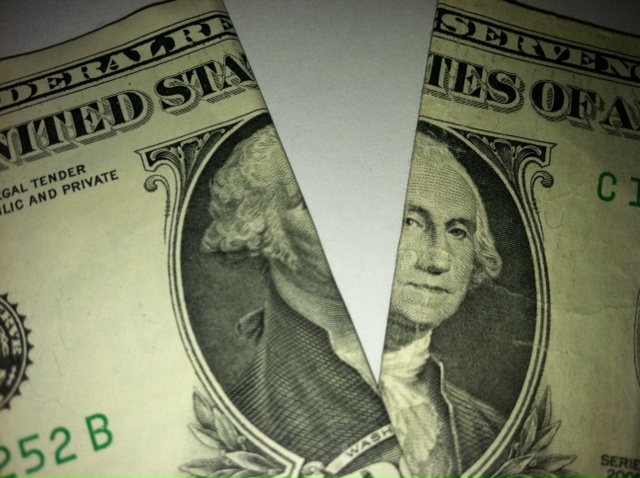Economy
Why Lacker, the Lone Fed Dissenter on Rate Hikes, Says the Time to Hike Fed Funds is Now
Published:
It turns out that by the Federal Reserve leaving interest rates alone at the zero interest rate policy created just that much more uncertainty. Janet Yellen even issued a third mandate, even if it may not last, that global instability was the main cause for not raising the Fed Funds. Richmond Fed President Jeffrey Lacker was the lone dissenting vote.
Lacker voted to raise Fed Funds up to 0.25%, from the current 0.00% to 0.25% currently. Again, he was the only Fed president to vote for a rate hike. This has been in place for years now. 24/7 Wall St. had hoped in the coming days to get a clarification from the Richmond Fed on the matter. it turns out that we no longer need to wait Mr. Lacker has issued a formal statement discussing his views and defending why he voted to raise interest rates.
As a reminder, the stock market ran going into the Fed announcement, then quickly peaked… and Janet Yellen’s speech with the mention of the uncertainties from global markets rattled confidence — even if an October hike was left as a possibility, with a December or January hike more certain (there is no November meeting). The Dow closed down 290 points at 16,384.58 and the S&P 500 closed down 32.17 at 1,958.03 on Friday. There was no global news other than their reaction to the Fed not having confidence to hike rates.
Rather than make interpretations and summaries of Mr.Lacker’s comments, 24/7 Wall St. has run his full statement from Saturday morning as is. Jeffrey Lacker’s statement said:
The Federal Open Market Committee (FOMC) decided on September 17, 2015, to maintain a target range of zero to 25 basis points for the federal funds rate.
I dissented because I believe that an increase in our interest rate target is needed, given current economic conditions and the medium-term outlook. Household spending, which has grown steadily since the recession, has accelerated in the last couple of years. Labor market conditions have steadily improved as well and have tightened considerably this year. With the federal funds rate near zero and inflation running between 1 and 2 percent, real (inflation-adjusted) short-term interest rates are below negative 1 percent. Such exceptionally low real interest rates are unlikely to be appropriate for an economy with persistently strong consumption growth and tightening labor markets.
Inflation has run somewhat below the Committee’s 2 percent objective in recent years and was held down late last year by declining oil prices and appreciation of the dollar. Since January, however, inflation has been very close to 2 percent. Movements in oil prices and the value of the dollar in recent weeks have renewed downward pressure on inflation. As with last year’s episode, this disinflationary impulse is likely to be transitory. So I remain confident that inflation will move back to the FOMC’s 2 percent objective over the medium term.
A higher interest rate under current conditions is also consistent with the way the FOMC has responded to economic conditions and inflation over the last few decades. This historical pattern of behavior has conditioned public beliefs about how the FOMC is likely to behave in the future, and it has been an essential foundation for the monetary stability we currently enjoy. Further delay would be a departure from a pattern of behavior that has served us well in the past. The historical record strongly suggests that such departures are risky and raise the likelihood of adverse outcomes.
For these reasons, I supported raising the target range for the federal funds rate by 25 basis points at this meeting. Interest rates have been near zero for over six years. Even after a quarter-point increase, interest rates would remain exceptionally low, providing ample support for economic growth. This expansion has been disappointing by some measures, when compared to historical averages. Nevertheless, U.S. economic conditions have improved quite significantly over the last six years, all things considered. It’s time to recognize the substantial progress that has been achieved and align rates accordingly.
I recently expressed my views in a speech to the Richmond Retail Merchants Association titled The Case Against Further Delay. My views on the economy and monetary policy are also available on richmondfed.org.
ALSO READ: 6 Stocks to Buy When Rates Do Actually Rise
Janet Yellen and fellow dovish members of the Federal Reserve do have one advantage that the rest of us do not have. They have the ability to see at least preliminary economic data while the data is being collected. With very weak readings from the Empire and Philly Fed reports on manufacturing, and after a very weak August market here and abroad, it seems safe to expect that economic readings outside of employment are likely to remain weak with little inflationary pressure visible.
If you’re like many Americans and keep your money ‘safe’ in a checking or savings account, think again. The average yield on a savings account is a paltry .4% today, and inflation is much higher. Checking accounts are even worse.
Every day you don’t move to a high-yield savings account that beats inflation, you lose more and more value.
But there is good news. To win qualified customers, some accounts are paying 9-10x this national average. That’s an incredible way to keep your money safe, and get paid at the same time. Our top pick for high yield savings accounts includes other one time cash bonuses, and is FDIC insured.
Click here to see how much more you could be earning on your savings today. It takes just a few minutes and your money could be working for you.
Thank you for reading! Have some feedback for us?
Contact the 24/7 Wall St. editorial team.